-
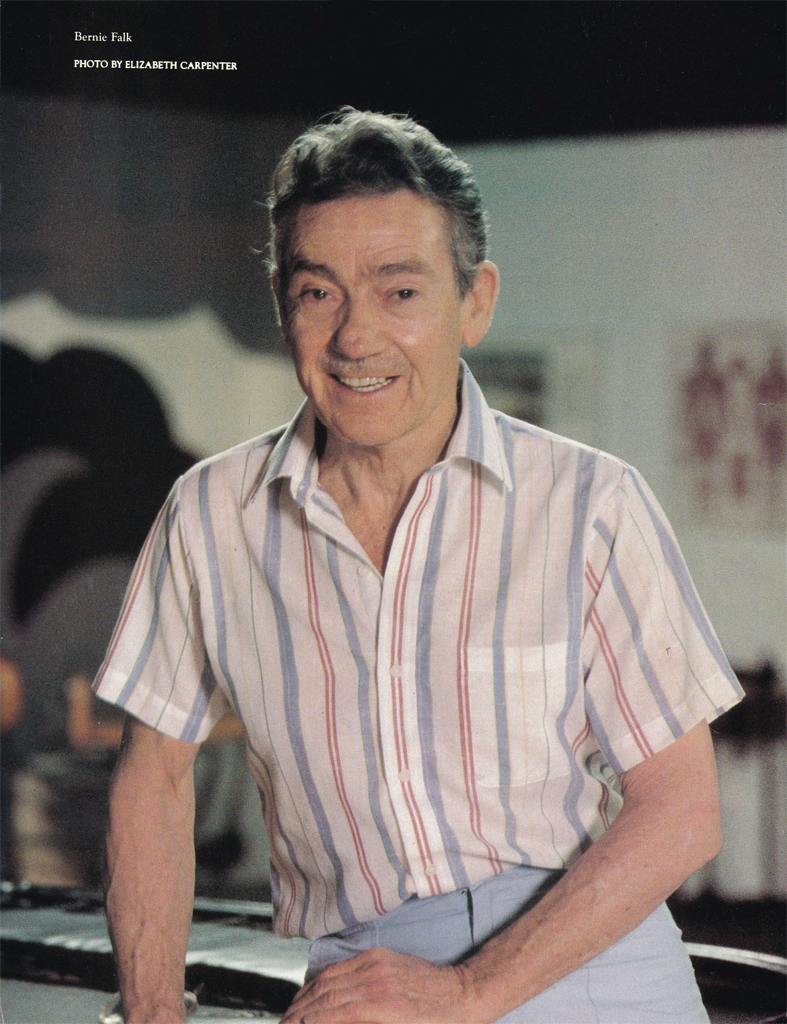
- Bernie Falk
-
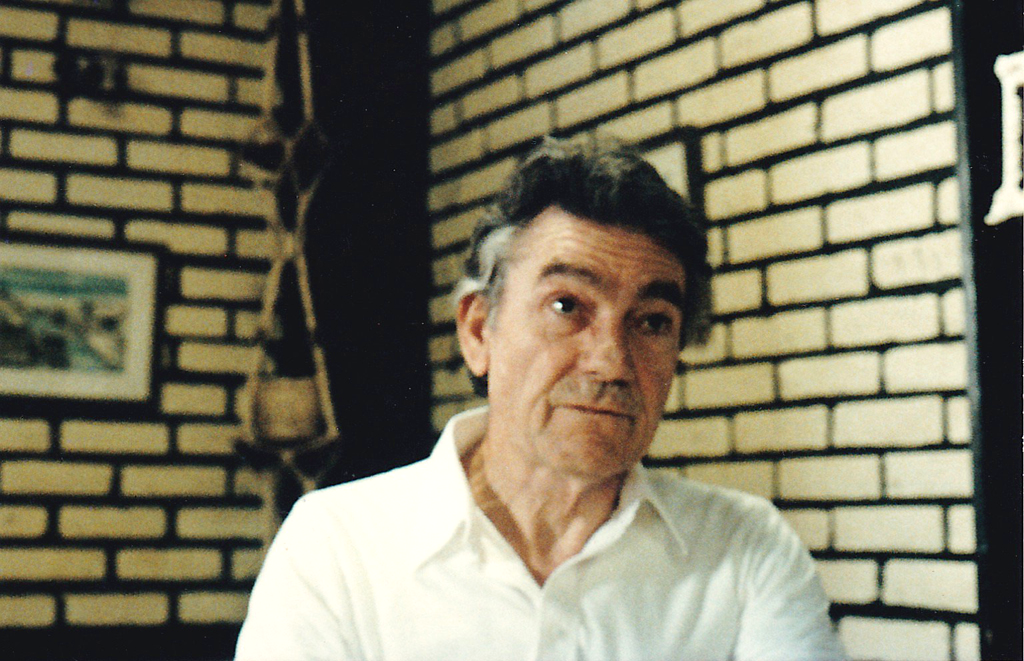
- Bernie in Studio
-
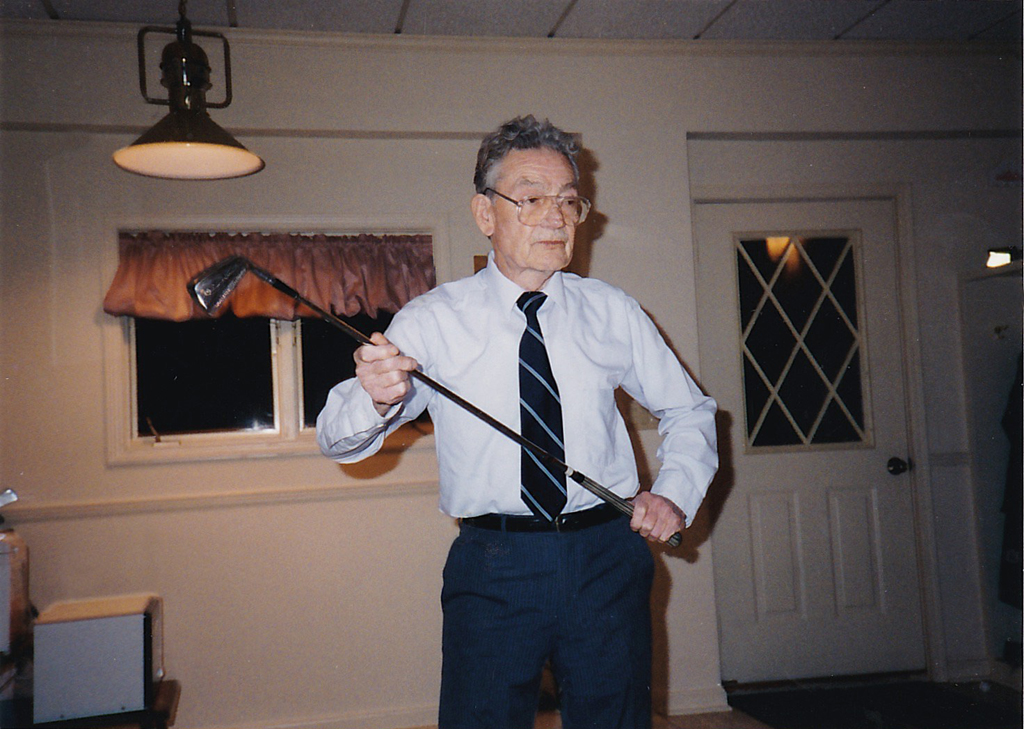
- Bernie with Golf Club
-
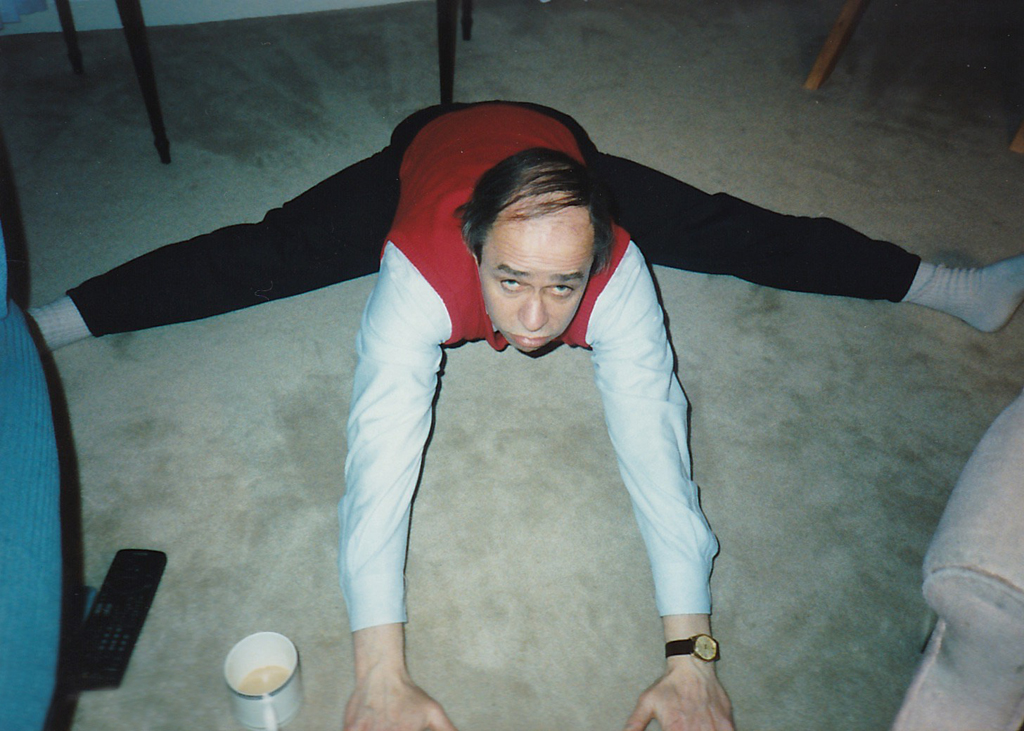
- Exercising
-
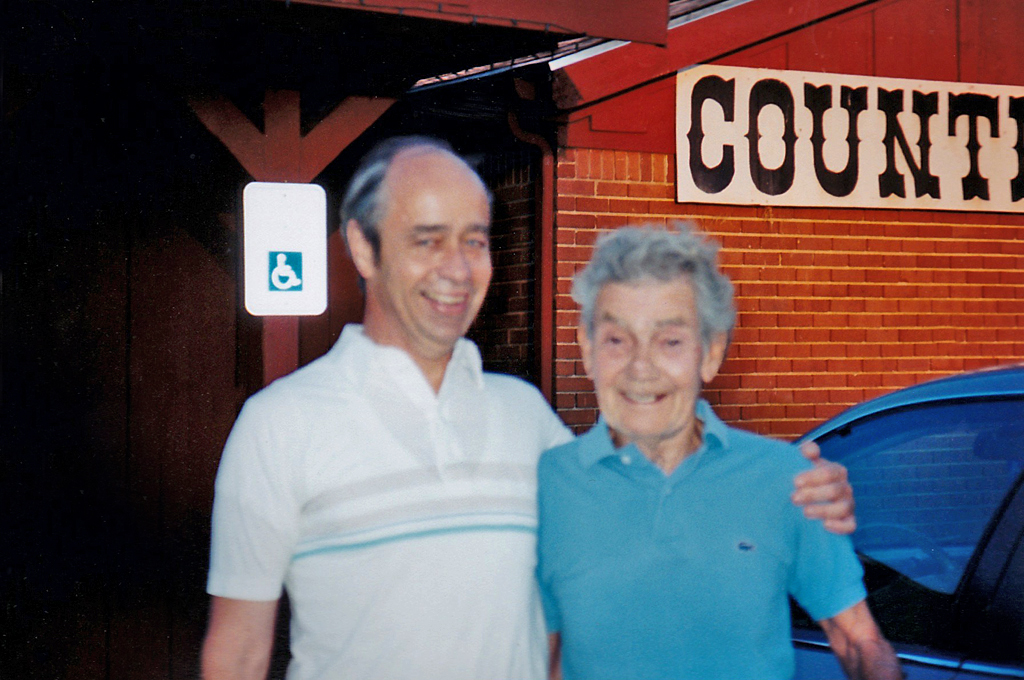
- Bernie and Henry Ledgard
Mr. Falk always said:
- The most important thing you can do about your health is to keep your weight down.
- The most important kind of exercise is flexibility.
- Arthritis is lack of flexibility.
The word “move” means the way you walk, sit, stand, or do something special that you do often. That “something special” may be mowing the lawn, lifting weights, watching television, reading a book, going downstairs, taking someone’s blood pressure, etc.
With the right exercise, you can make some change in the way you move. It is exciting to find that the change makes it easier and nicer for you, and really helps you!
Always work to strengthen weaknesses, as observed by the way you move.
For example, if everything is easier with your left leg, i.e. your left leg is stronger than your right, work on your left leg. The right leg is fine as is.
If an exercise hurts afterwards, do not do it!
Some Quotes from Bernie Falk:
- If you only do one kind of exercise, do stretching.
- If an exercise is good, it is really good.
- If you only do one thing about your health, keep your weight down.
 A wonderful article about my good friend Bernie Falk appeared in the Grosse Pointe Heritage Magazine.
A wonderful article about my good friend Bernie Falk appeared in the Grosse Pointe Heritage Magazine.
I'd like to share it with you.
The article was called: Walking Tall.
The author: Andee Seeger.
The photographer: Elizabeth Carpenter.
The date; September: 1986.
Walking Tall
The ancient Greeks had two words for it: "Know thyself."
Bernie Falk is not Greek. He was born in Wickliffe, Kentucky. But he decided at an early age--about two, he says--that what he wanted in life was to know oneself, to understand how a body-functions.
Through all his years in physical education, Falk has devotedly studied how people move and how the nature of that movement affects their well-being. He analyzes his clients, ranging in age from infancy to ninety-three, to learn what they are doing wrong and to teach them to correct it. He has literally straightened out learning disabled children, stroke victims, and people suffering from a catalog of aches and pains. He claims no miracles, but he has made the lame to walk and the half-blind to see better, and for that they bless him.
Bernie--and the name is Bernie, not Bernard--is a small, wiry man of indeterminate age in superb physical condition. He moves around his studio with the easy floating grace of a boxer, which he once was. The windowless studio on Kercheval contains a room-length exercise mat, a couple of balance beams, several small trampolines and one large one, a wall ladder, several pairs of small dumbbells, and space to move. To Bernie Falk, movement—easy, correct movement—is the key to almost everything.
Falk emphasizes that his work is not physical therapy, but education. He earned his bachelor's degree in physical education and sociology from Southern Illinois University, where he captained the college gymnastics team, beat much taller men at track and took up all sorts of sports. Then he went to the University of Illinois for a master's degree in educational methods and physical fitness. He returned there for three summers in a program to test twenty thousand children for physical fitness. That gave him a chance to develop and test some theories of his own. After teaching for a couple of years in Momence, Illinois, he moved to Grosse Pointe in 1942 and worked first as a teacher and then as physical education consultant for the Grosse Pointe Public School System until 1970.
Falk believes that the human body is built to move in certain ways, and that anything which violates natural movement can and probably will cause trouble down the line. He specializes in what he calls "movement-directed exercise," which he tailors to each individual client, and he has a sharp eye for the bad habits we pick up and the often damaging ways we try to compensate for them. Most of the time, says Falk, we move automatically and unaware. If we were conscious of every move, we couldn't do anything, certainly not efficiently. We're like the centipede who was getting around quite well until someone asked him which leg he moved first; whereupon the poor thing became so self-conscious and confused, he couldn't walk at all. Yet Falk points out that we must recognize our mistakes in order to correct them, and then work to build new habits to keep the old ones from coming back. One's attitude is extremely important.
Falk states that movement should flow easily. He tells how, as a child, he practiced for hours to train himself to throw as well with his left hand as he could with his right. In the end he could fool other people, but never himself. He always had to throw self-consciously with his left hand; it never became automatic, as with his right.
Falk is very strong on right- and left-handedness. He states that one person in four writes with the wrong hand, under pressure from a right-handed society, creating all kinds of internal stress, with emotional and physical consequences. He relates how several clients made a complete turn-around in their lives, in more ways than one, once he switched them to the opposite hand. One artist even gave him her first left-hand drawing; a beautiful thing, it hangs above his desk.
Falk likes children. He raised five of his own, all college graduates. He has worked with tens of thousands of kids, and says they have been his best teachers. He noticed long ago that children with disruptive behavior are usually poorly coordinated; help the child physically, and the discipline will take care of itself. Too often, Falk notes, adults label a child, "and he may have to live with that label. He may be hyperkinetic, sluggish, a slow learner, possibly slightly retarded. But if a kid knows the difference between a cat and a dog, and he can talk, he has a possibility of being a genius."
Among area parents of children with learning disabilities, Falk has become a byword. One family heard of him upon moving here and took their six-year-old. They have been thrilled with the results. As the child's motor skills improved under Falk's one-on-one approach, timidity gave way to self-esteem, and the young mind opened up. Now the youngster is entering high school, with a promising future.
Falk builds good rapport with children, partly because he respects them. He says that a child is not a miniature adult, but has a child's mind and must work in terms he or she can understand.
The ancients said, “A sound mind in a sound body." Today, scientific researchers believe that training muscles also means conditioning the nervous system, strengthening nerve cells and their central control mechanism.
Learning, including physical training, involves developing new neural paths and either abandoning or reinforcing old ones; hence, mental improvement. The building of confidence and self-esteem goes along with it; each supports the other.
According to Falk, the pain or condition which brings a client to him is often the symptom, not the source, of the trouble. He suspects that ninety-five percent of people do not walk correctly. The body should be properly aligned, but people "walk on their knees" or their hips, or stride unevenly, or hoist one shoulder higher than the other. Such things lead to malfunction and can hurt. Falk says that any movement we do wrong can affect any other part of us. Each of us is a living whole, and without going into the mystique of holistic medicine, the fact is that, as the song says, the head-bone is connected to the neck-bone. One part affects all, and a habitually misdirected foot can throw the entire body out of line, creating strain in unsuspected places. So can tension. "Pain in the neck" is not just a figure of speech. Misuse of a muscle can cause tension, and vice versa. Anger, too, can warp us.
Deterioration is a vicious circle. Something hurts, so we baby it, move it less and less, let it atrophy, further reducing what it can do. Then if we move suddenly, if we leap or fall, we are more likely to get hurt-not only the tender part, but all the rest of the body that depended on it when it couldn't do its job.
Falk explains that exercise without direction may not help us. We must understand what ails us and get to the root of the problem instead of neglecting our kinesthetic or muscle sense and ignoring what our bodies are trying to tell us. People are not windup toys; our movements vary, and if we don't control them with understanding, we can do more damage. Repeating a mistake can only make the problem worse.
As Falk describes it, people often approach exercise blindly. "They use will power to make themselves do it. They're not aware of what they're doing. They don't enjoy the exercise. They get the opposite of what they want out of movement. They teach themselves to strain." Exercise, says Falk, is to enjoy, not suffer. As for tension, "I tell people, they live life like driving a car with the brakes on."
Falk sees his work as continuing physical education. Dr. Joseph Spagnoli, Deputy Superintendent of the Grosse Pointe Public School System, recalls that throughout his years in the schools, Falk "was a leader in physical education and developed a lot of programs which we still use."
Frank Welcenbach, who was principal at Tiombley School, echoes that: "The biggest contribution Bernie made was to develop a physical fitness and physical education program for kindergarten through sixth grades.”
Richard Kay, formerly principal at Richard and Kerby, remembers Falk as “quite a character! I remember that the school once put on what we called an ‘educational circus,’ really an open house with teaching demonstrations. Bernie had the kids doing gymnastics, walking on their hands, working on the trampoline.”
John Hammel, another retired colleague, was principal at Poupard and Montheith, and states emphatically, “Bernie was ahead of his time, a pioneer in exercise.” And Tom Taber, who has taught physical education at University Liggett, cites Falk’s reputation for concern with the physical well-being of the young. But much of his most notable work has been with adults. Henry Ledgard, an author who came in on a stretcher, has written a book, The Origins of Common Pain, about how Falk restored him to health and mobility.
Because of athletic injuries, the Detroit Lions and the Red Wings have sent Falk players, including former manager and coach Ted Lindsay, who was an All-Star player; Rogie Vachon, now with the Los Angeles Kings; and superstar Terry Harper.
Musicians come, too. Eleanor Schwartz, who wore a brace for six years until Falk worked her out of it, went on to become a concert pianist. Italo Babini, principal cellist with the Detroit Symphony Orchestra, suffered a ruptured disk and needed a series of exercises to ease pain and correct his posture.
Falk’s clients include doctors, dentists, psychiatrists, lawyers, stockbrokers, and people from many other walks of life. He works with pre- and post-operative patients, even sparing some the need for surgery. He also helps people who have suffered strokes (his first wife, Grace Christman, died of a stroke in 1974). He even makes house calls.
Donald Thurber, well-known public relations man and fund-raiser, is a longtime Falk devotee. Thurber had worked out with Falk for several years, but had a massive stroke in 1977. “In essence,” he says, “I had to learn to walk all over again. Bernie taught me how.” Doctors had given Thurber up, told him to buy an electric wheelchair and forget about walking. Thurber states enthusiastically, “I knew I wanted to work with Bernie Falk again as soon as I was able. I trusted his judgment. He never lost his faith and understanding, and I never lost my faith in him. Now I walk two miles a day.”
Mort Feigenson, recently retired as president of Faygo Beverages, went to Falk because of a bad tennis elbow. Feigenson’s late wife, Jackie, had been working out there, and Falk had pulled Jackie’s sister back from the brink of surgery. “You can’t fix a tennis elbow,” Feigenson says, “but Bernie did it. I worked with him a year or two. He doesn’t work just with the area of the pain, but with overall coordination, because the pain may be coming from somewhere else. He makes everything carry its share of the load. He’s quite amazing. You can walk across the room, and he’ll tell you eight different things you’re doing wrong—and he’s right.”
Falk has gone to clients in Massachusetts and New Jersey, and they have come to him from New York, Arizona, and California. He tries to put in a regular work week, but finds it complicated with weekend or week-long out-of-towners, many in dire need of his services. It’s all by word-of-mouth. He doesn’t advertise.
Falk’s hobbies include jogging (“at intervals”), golf, and writing poetry. He speaks of his concerns for the underdog. He loves birds and “anything that moves”. Ask his clients their opinions, and the same adjectives come from many different directions: patient, gentle, compassionate, sincere, skillful, perceptive, analytical, honest, dedicated, professional. That’s a tall order, but Bernie Falk appears to fill it with ease.
